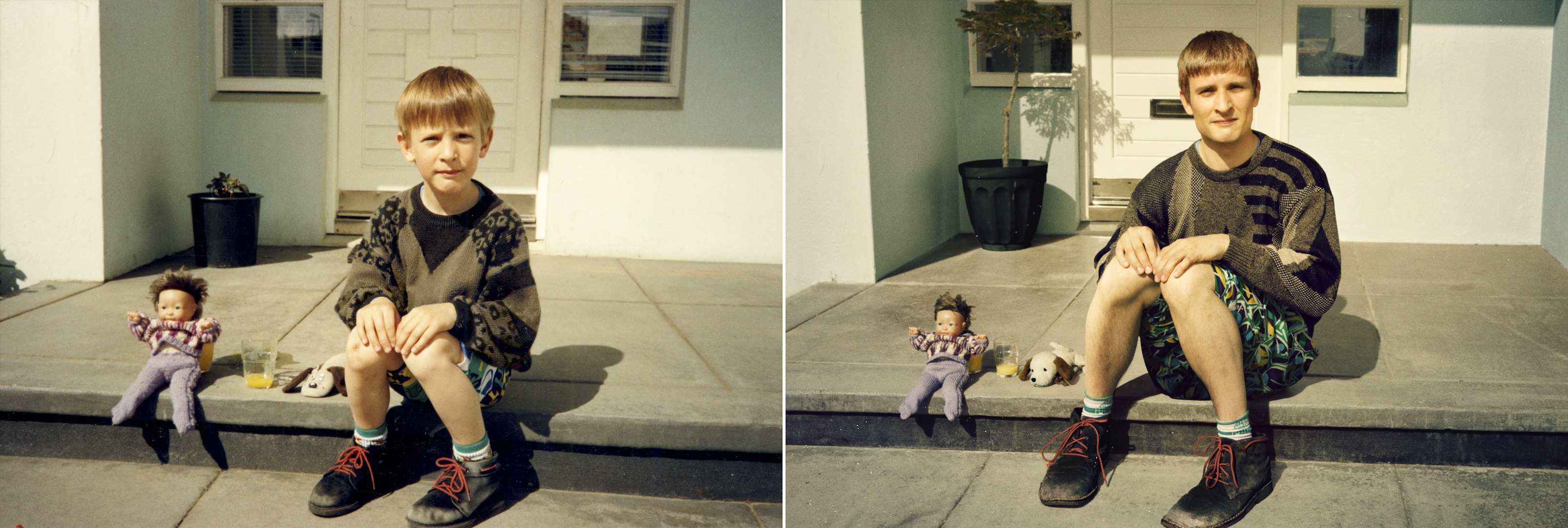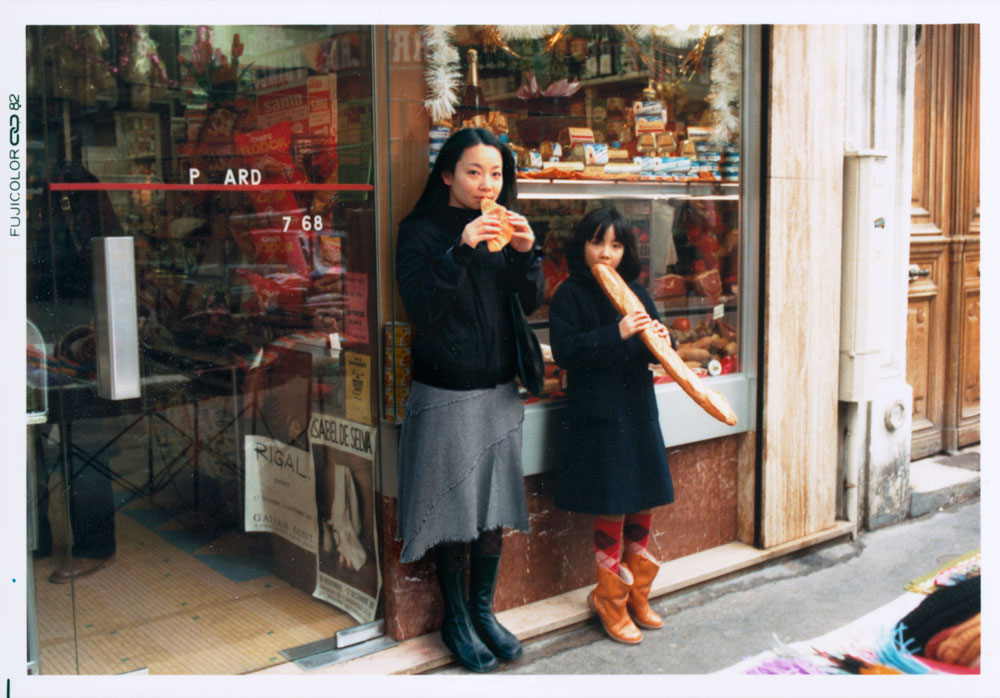In the new academic year beginning in September we will be exploring the themes of LOVE & REBELLION in an exciting programme of study that will be centred around visual storytelling and include a variety of outcomes such as designing photo-zines, photobook, write an essay and produce a film.
An island lockdown has been in place during the coronavirus outbreak and most people have been confined to their own home, for better or worse. Drawing on these experiences we are setting you weekly photo-assignments based around the concept of HOME SWEET HOME
Some of these assignments may lead onto more sustained investigations in preparation for our main project in the autumn and are designed to improve your photographic skills when it comes to portraiture, composition and use of natural light. In addition the final assignment is envisioned as a Summer Task that will allow you to be creative with your camera and bulk up your own image archive, that will help you build a coherent body of work from which you can develop personal stories, interesting visual narratives and refine different outcomes mentioned above as part of LOVE & REBELLION. The main shift in your photographic studies from Yr 12 to Yr 13 is to begin to consider images in series that are part of a much larger visual investigation and photographic narrative, rather than just make one good picture!
In the photo-assigments below you will be assessed on effort, camera skills, creativity and overall aesthetic quality of your photographs. You are required to make a self-assessment of each of your shoots using mark sheet at the end of the post.
Download HOME SWEET HOME PlANNER and use it weekly to help you with monitoring and tracking your own progress
EVIDENCE
From each assignment complete the following and publish on the blog on a weekly basis: Use Planner above to help with monitoring and tracking progress
- PLANNING: Who, What. When, Where? How do you want your images to look and feel like? Include visual references to artists/photographers in terms of style, approach, intentions, aesthetics concept and outcome. Use inspirations listed here or find your own.
- RECORDING: Consider guidelines provided for each assignment such as source and direction of lighting, composition and framing, backdrop and location. Use tripod where appropriate and take your time shooting and connecting with your subject.
- EDITING: Upload and process images from each photo-shoot. Make a rough edit of 8–10 images and evaluate.
- EXPERIMENTING: Show experimentation with different adjustments/ techniques/ processes in Lightroom/ Photoshop appropriate to intentions.
- ANALYSIS: Select at least 1 key images and analyse in depth using this methodology: TECHNICAL > VISUAL > CONTEXTUAL > CONCEPTUAL. Compare with examples of artists references where appropriate.

- EVALUATION: Evaluate each assignment and make a self assessment based on the criteria, EFFORT, SKILL, CREATIVITY and AESTHETIC using this mark sheet and post on the blog.
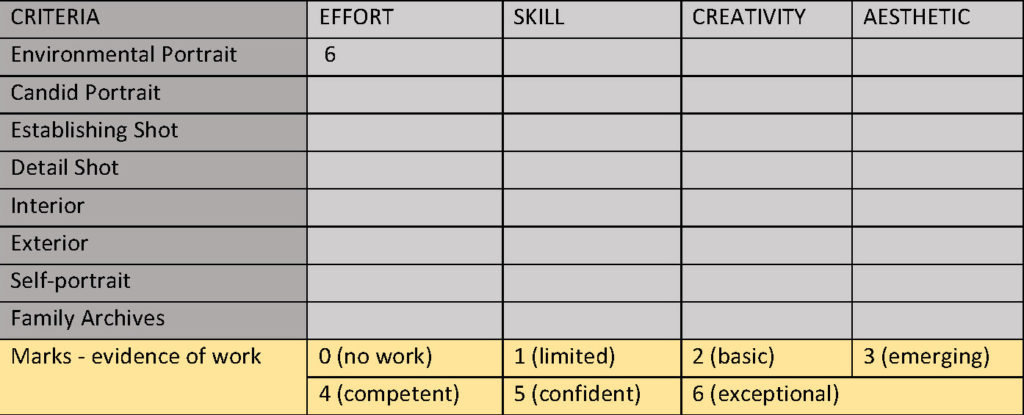
GUIDELINES
Consider the following before and during shooting
- LOCATION: at home in the living room, kitchen or bedroom, consider natural light (window light) and backdrop. Location can also be outside of the house during daylight
- MODEL: family members, parents, brother, sister, grandparents, aunts, uncles, friends.
- POSING: ask model to try out different poses and control how you set up the people you are photographing choosing appropriate location and backdrop.
- FRAMING: full-body, half-body and head-shots, experiment with different angles and use appropriate focal lenght (ie. wide-angle lens 18-35mm, standard lens 50mm, telephoto lens 70-300mm).
- LIGHTING: consider source and direction of lighting
- INSIDE: use natural light through window as side light
- OUTSIDE: Avoid direct sunlight or dull grey overcast light in the middle of the day. Choose softer light, early morning/ late afternoon, sunlight diffused by clouds etc.

For further inspiration and context study the exhibition Home Sweet Home and book of the same name. Read feature here on Lensculture
PHOTO-ASSIGNMENT 1: Home Sweet Home
Environmental Portrait – RULE: Use tripod
Candid portrait
50-100 images
DEADLINE: Wed 24 June
ENVIRONMENTAL PORTRAIT: A formal portrait with emphasis on environment and setting of the model that may suggest the person’s social, economic, cultural background.



Larry Sultan: Pictures from Home. Read article here in The Guardian

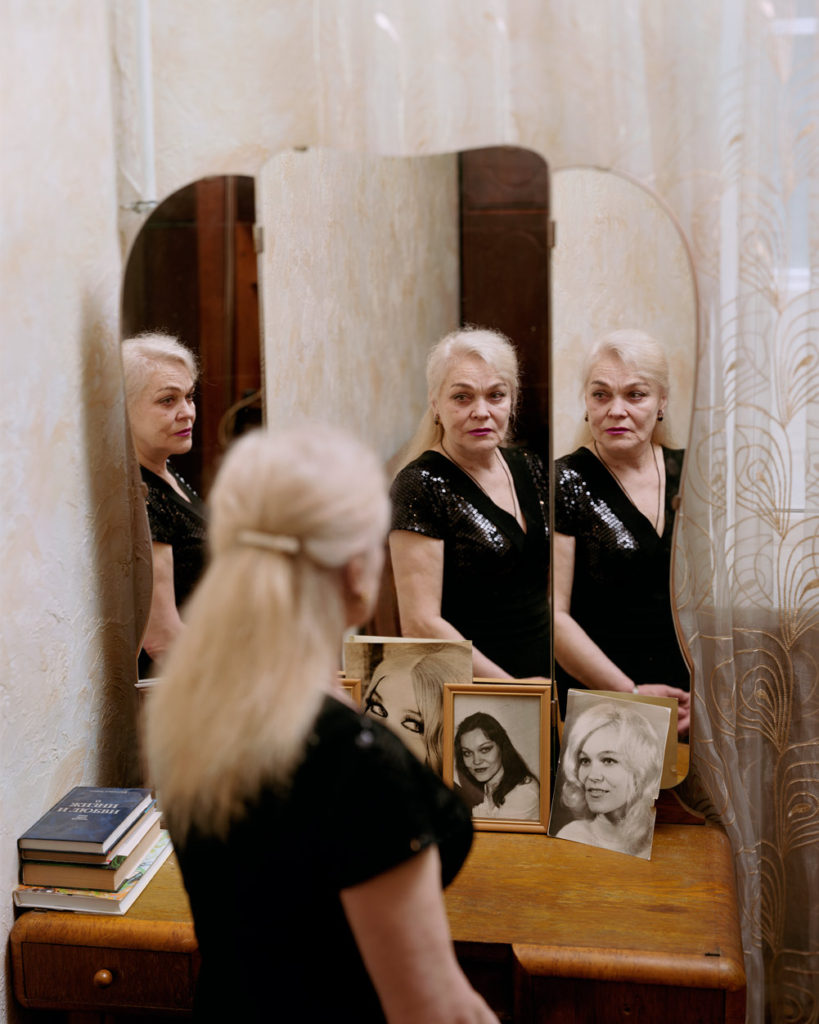

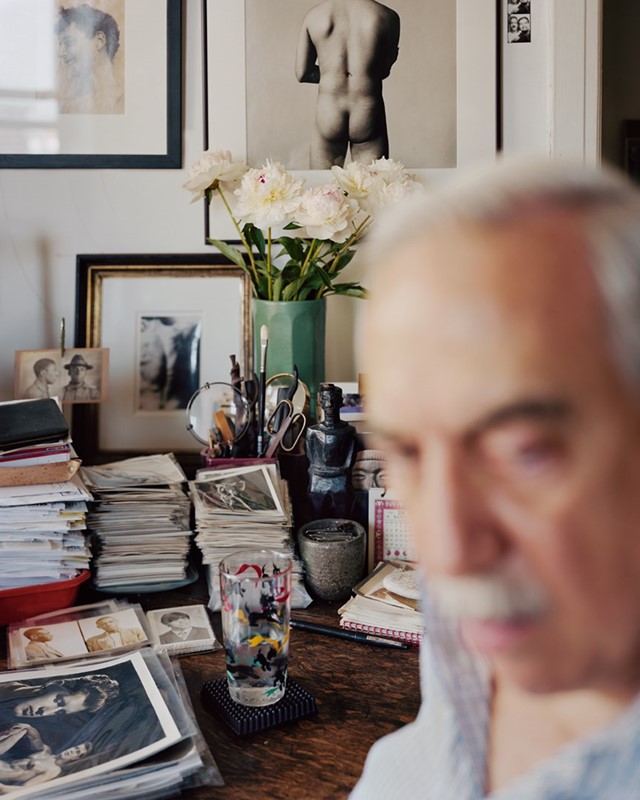
Recent interview in New York Times with Alec Soth about his new book I Know How Furiously Your Heart is Beating and a review by Sean O’Hagan in The Guardian.

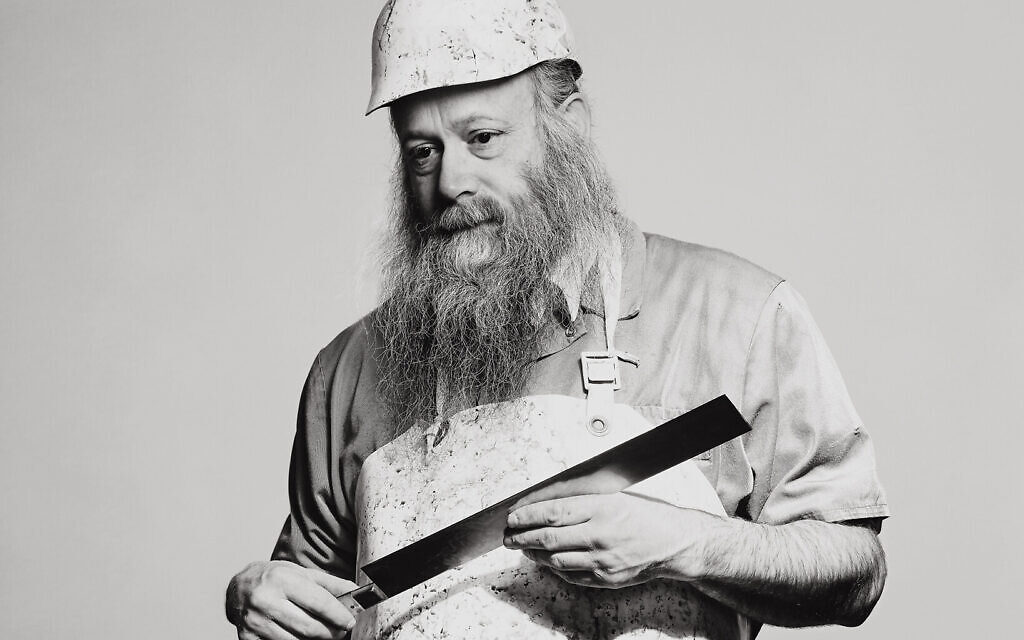
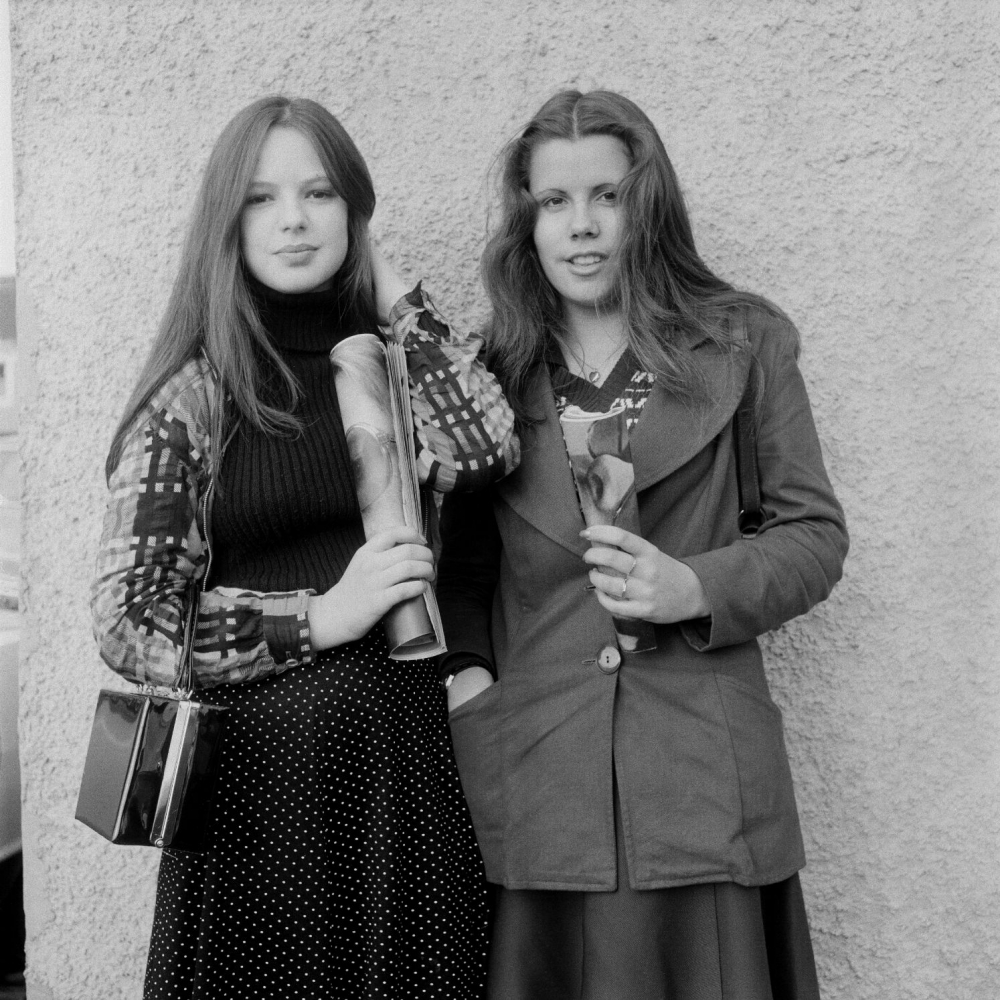

Daniel Meadows: Middle England, 1973-79
Read Fieldwork a study on Daniel Meadows by curator and academic Val Williams
CANDID PORTRAIT: An informal portrait that presents a ‘natural’ look and capturing a moment, seemingly without artifice.


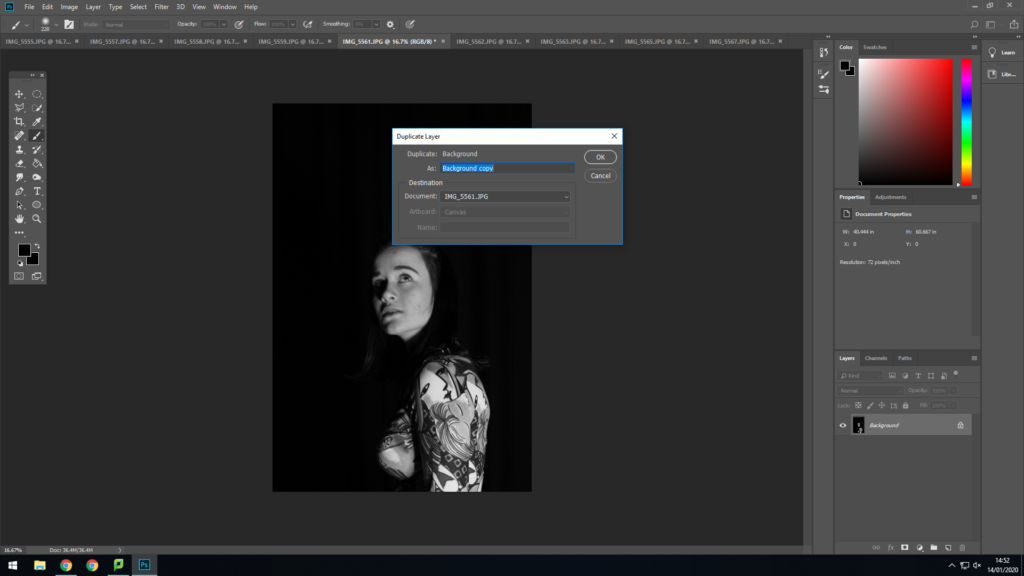


Richard Billingham: Ray’s A Laugh
Read article in The Guardian by Tim Adams
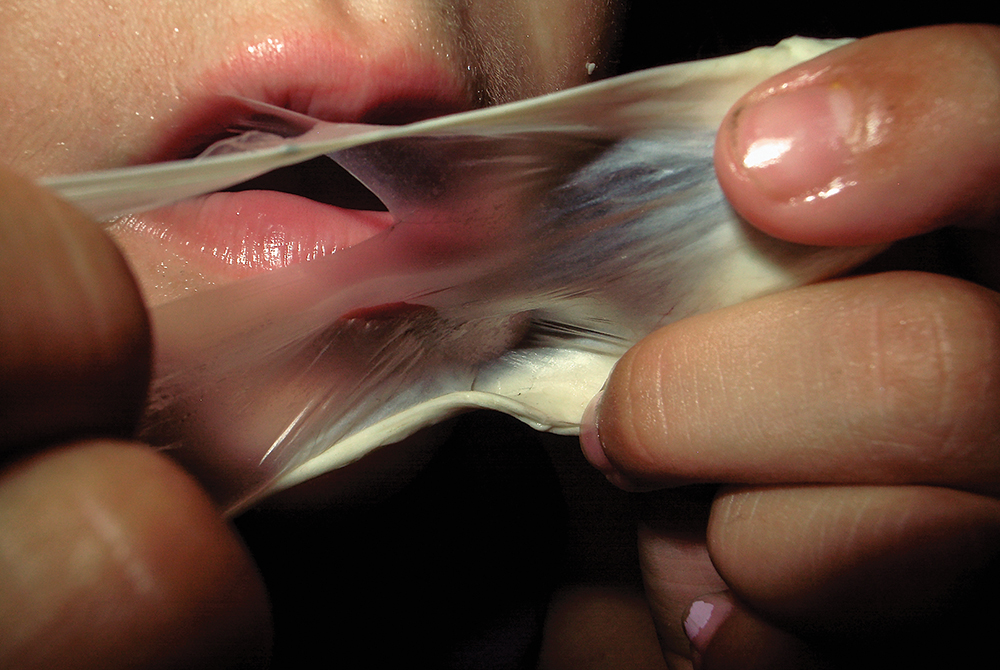

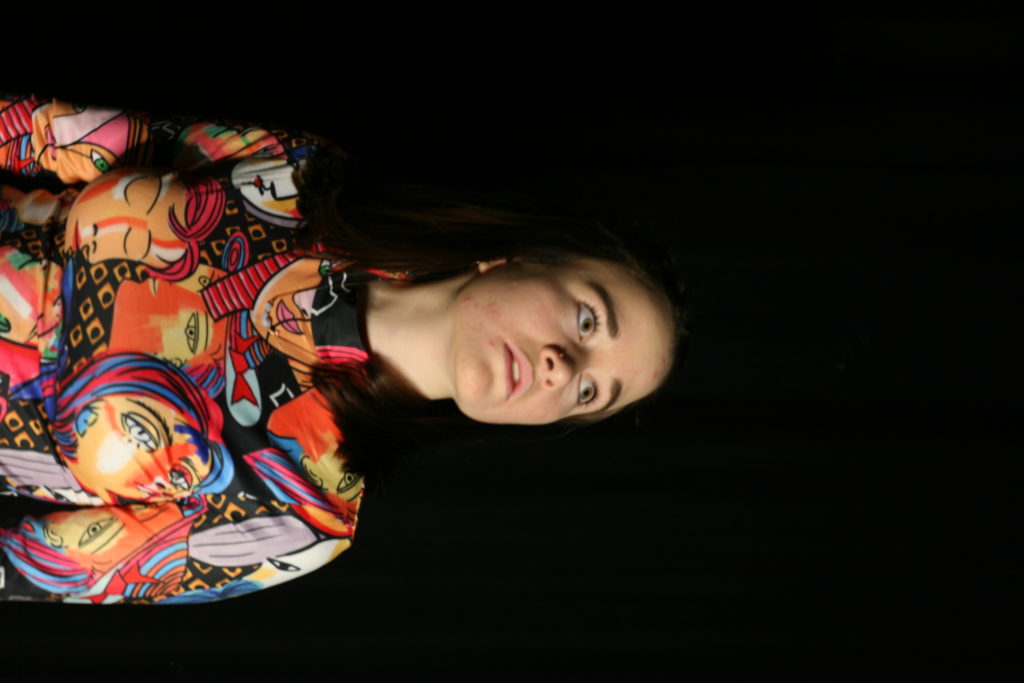

Sam Harris, The Middle of Somewhere




Anthony Haughey: Home, 1989-1990
PHOTO-ASSIGNMENT 2: Home Sweet Home
Establishing shot — RULE: Use tripod
Detail shot
50-100 images
DEADLINE: Wed 1 July
ESTABLISHING SHOT: a group portrait of two or more members of the family where you are constructing an image that tells a story. This image can be naturally observed or staged. The main focus is conveying a sense of narrative.
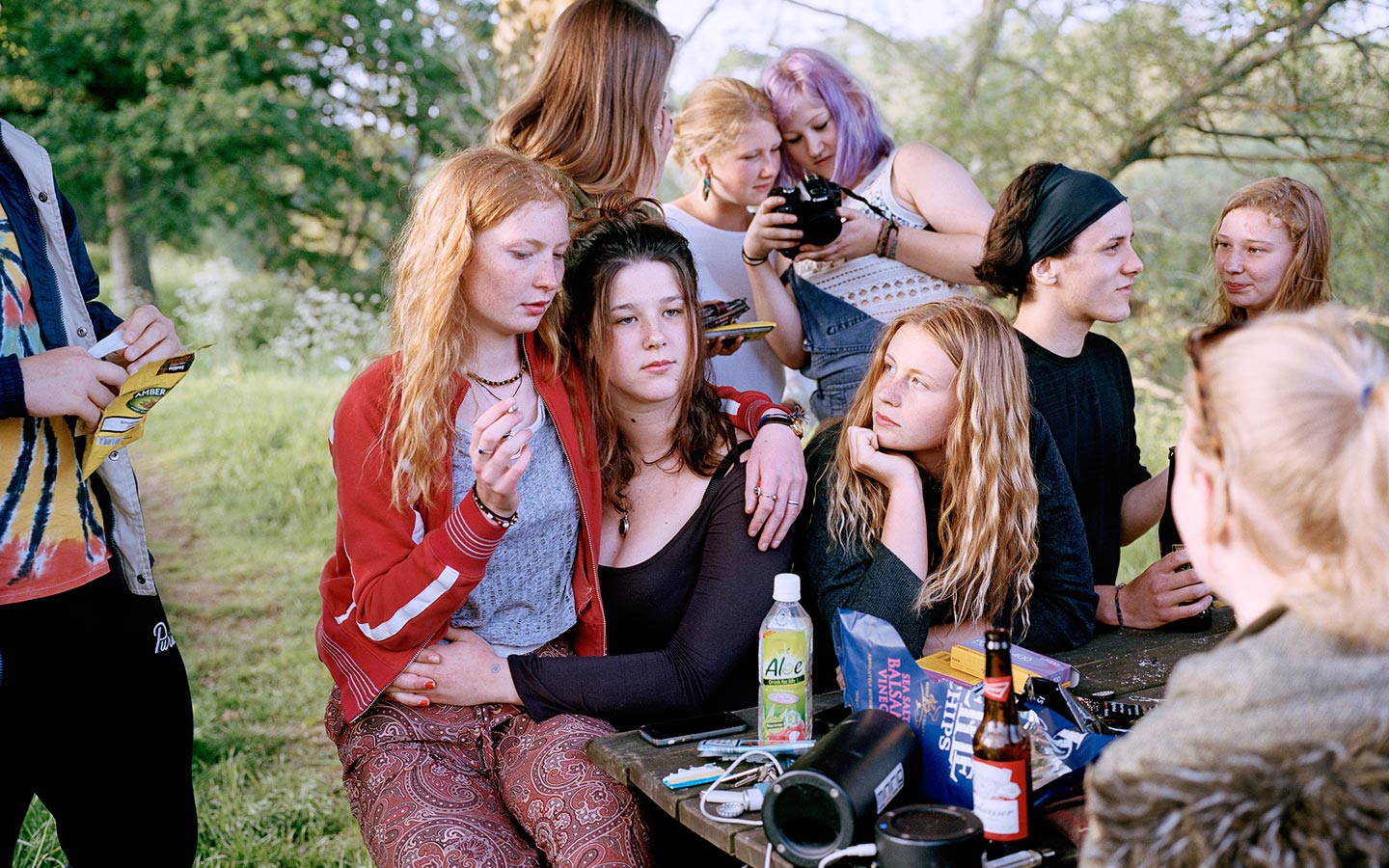


Sian Davey, Martha
Read interview here in The Guardian
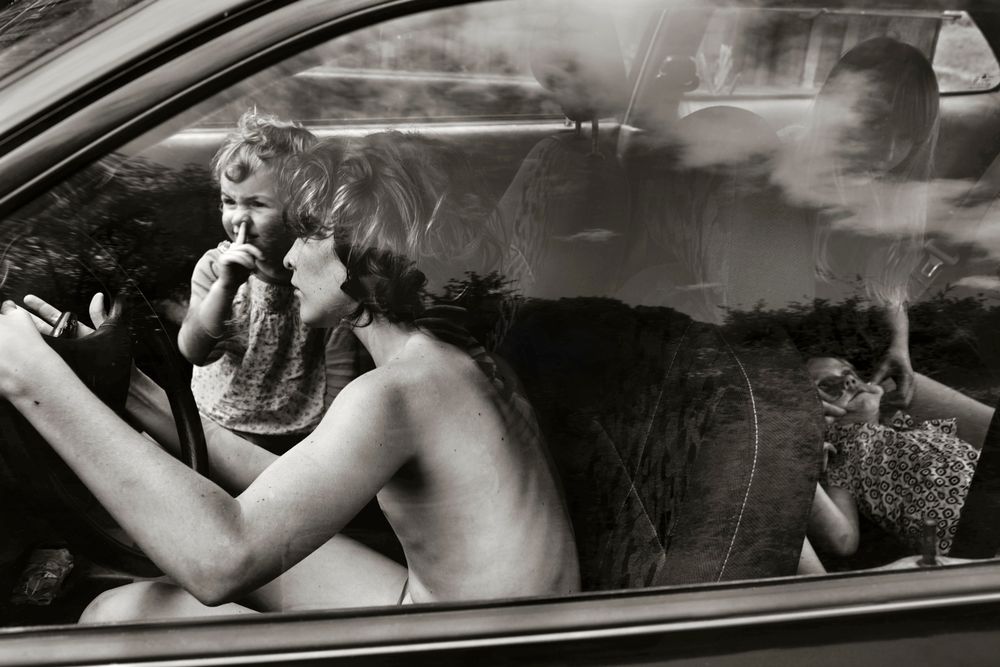
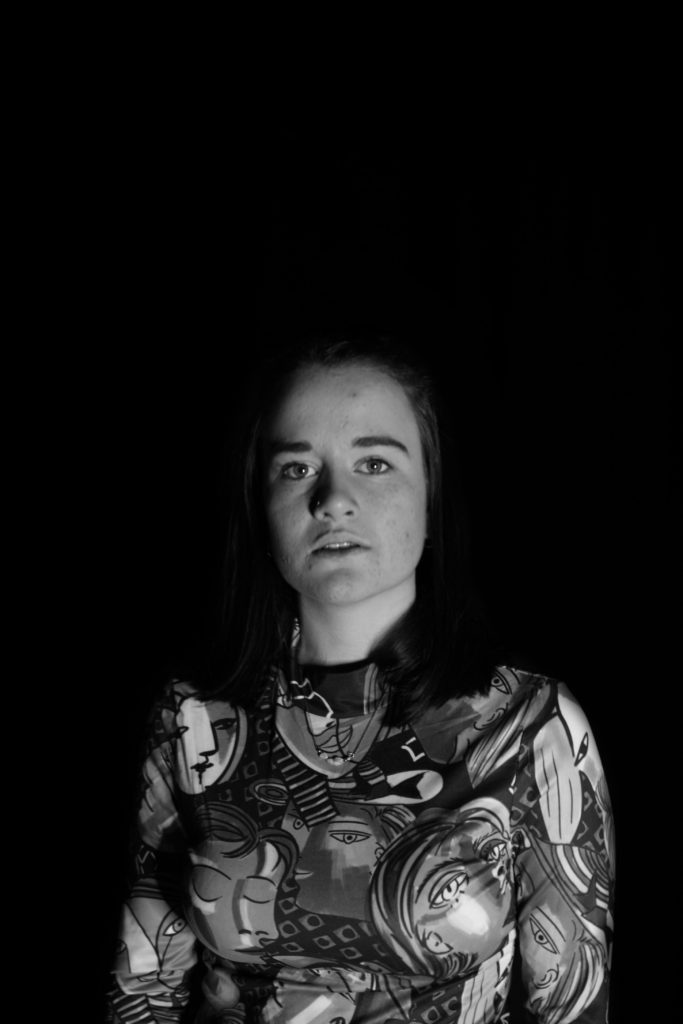

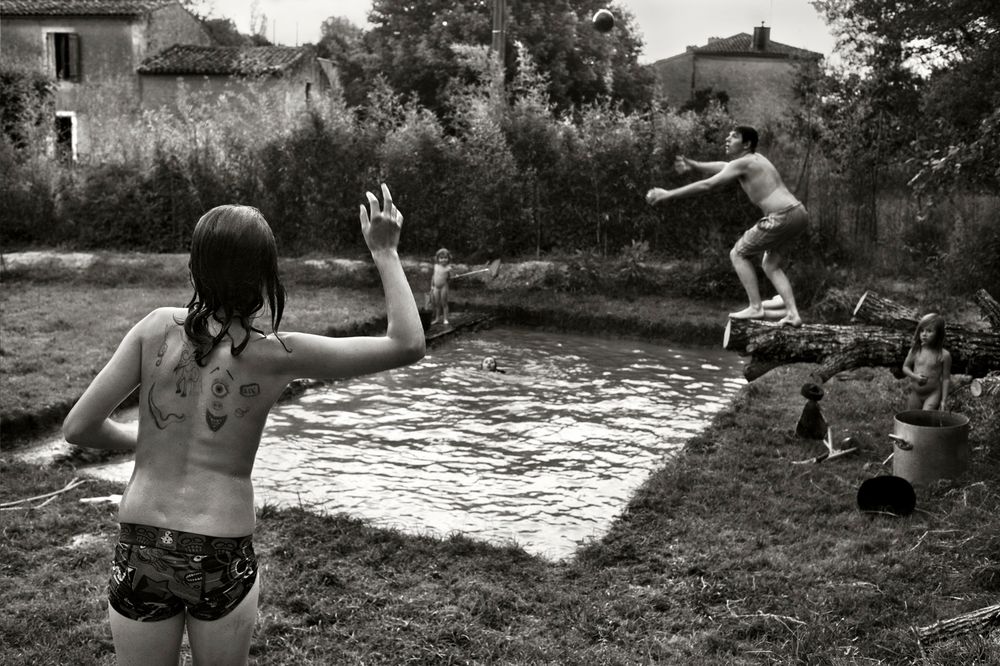
Alain Laboile, La Familie
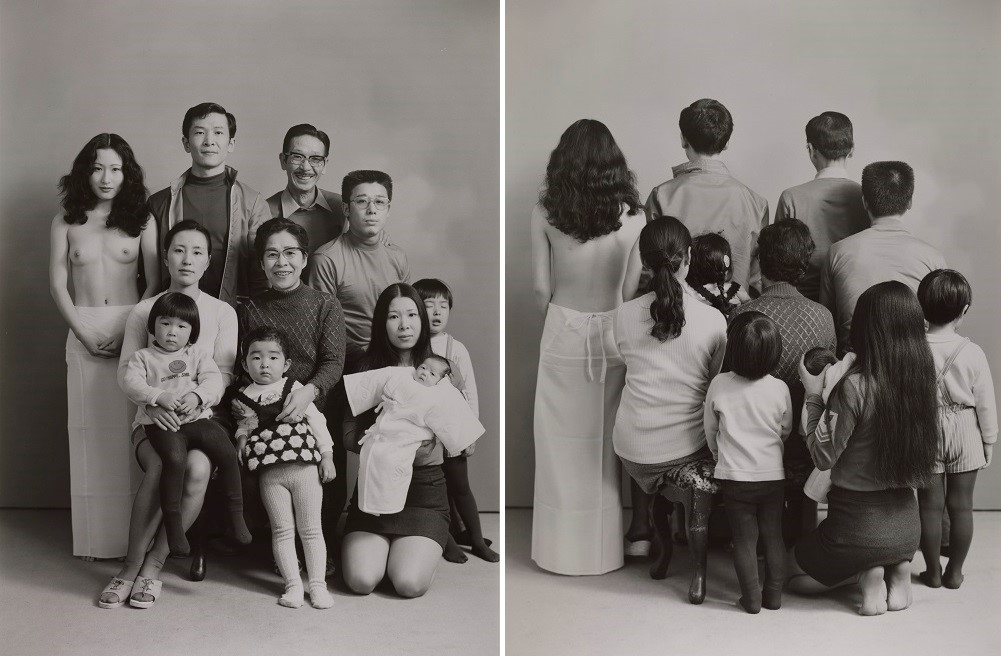
Masahisa Fukase: Family
‘My entire family, whose image I see inverted in the frosted glass, will die one day. This camera, which reflects and freezes their images, is actually a device for archiving death’. – Masahisa Fukase
For three generations the Fukase family ran a photography studio in Bifuka, a small provincial town in the northern Japanese province of Hokkaido. In August 1971, at the age of 35, Masahisa Fukase returned home from Tokyo, where he had moved in the 1950s. He realised that the Fukase Photographic Studio, which his younger brother managed, combined with the growing family members, constituted the perfect subject for a series of portraits. Between 1971 and 1989, he returned regularly and used the family studio, the large-format Anthony view camera and the changing family line-up as the basis for the series. True to his style, Fukase often introduced third-party models and humorous elements to juxtapose the ineluctable reality of time passing and the dwindling family group. He continued the series through his father’s death in 1987, up until the closure of the Fukase studio due to bankruptcy in 1989, and the consequential dispersion of the family.


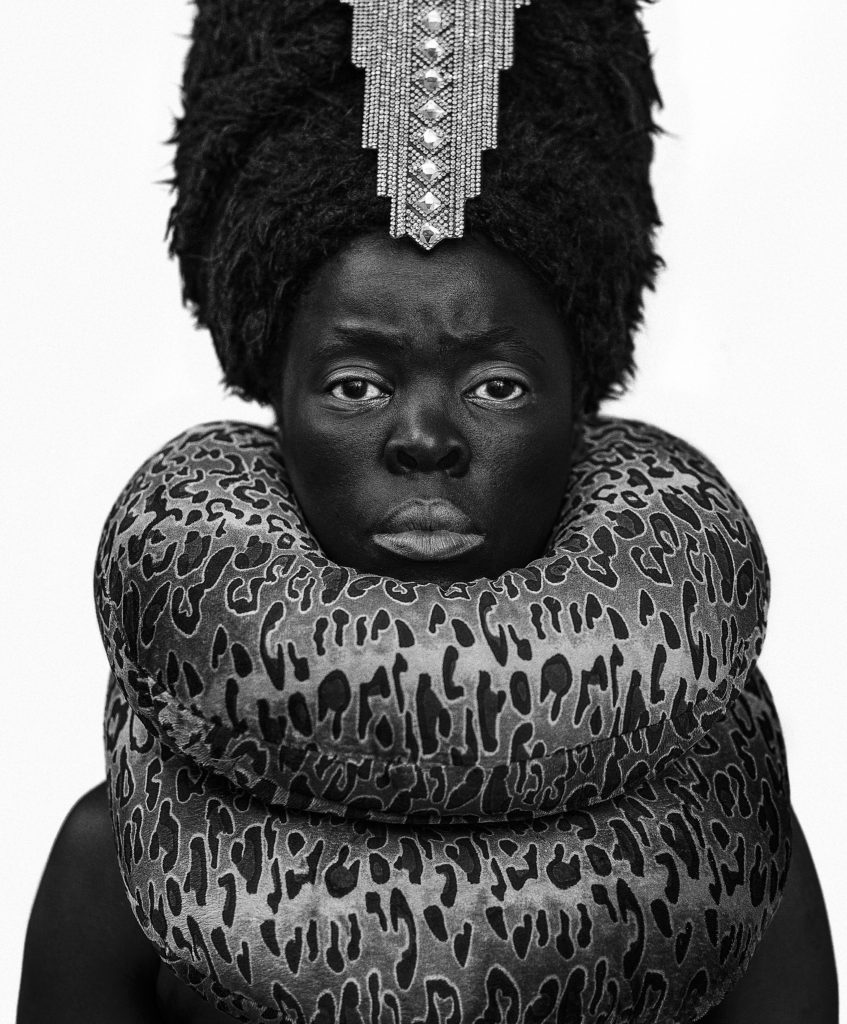
Daniel Meadows: June Street Salford, Manchester, 1973
DETAIL SHOT Focus on a detail of a person or close up of something that conveys something about the individual character or identity eg. age, race, gender, sexuality, fashion, hobby, lifestyle etc.
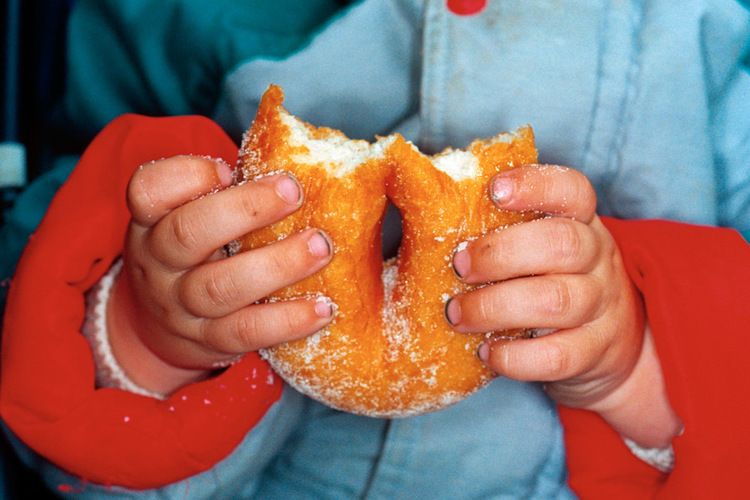


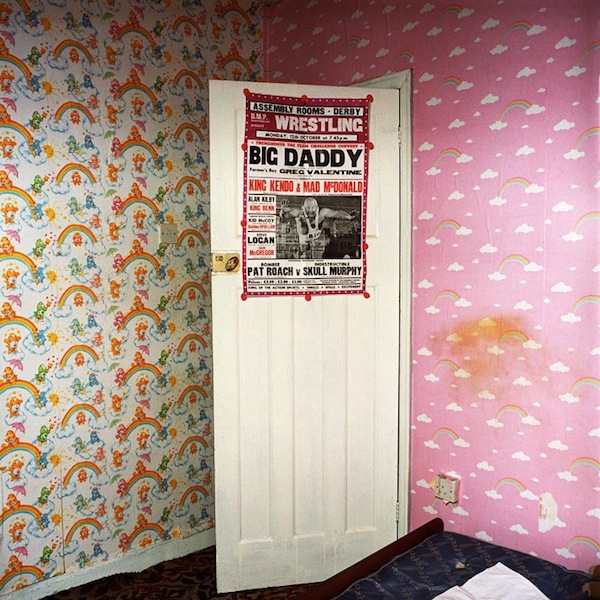



David Moore: Pictures from the Real World, 1987-1988


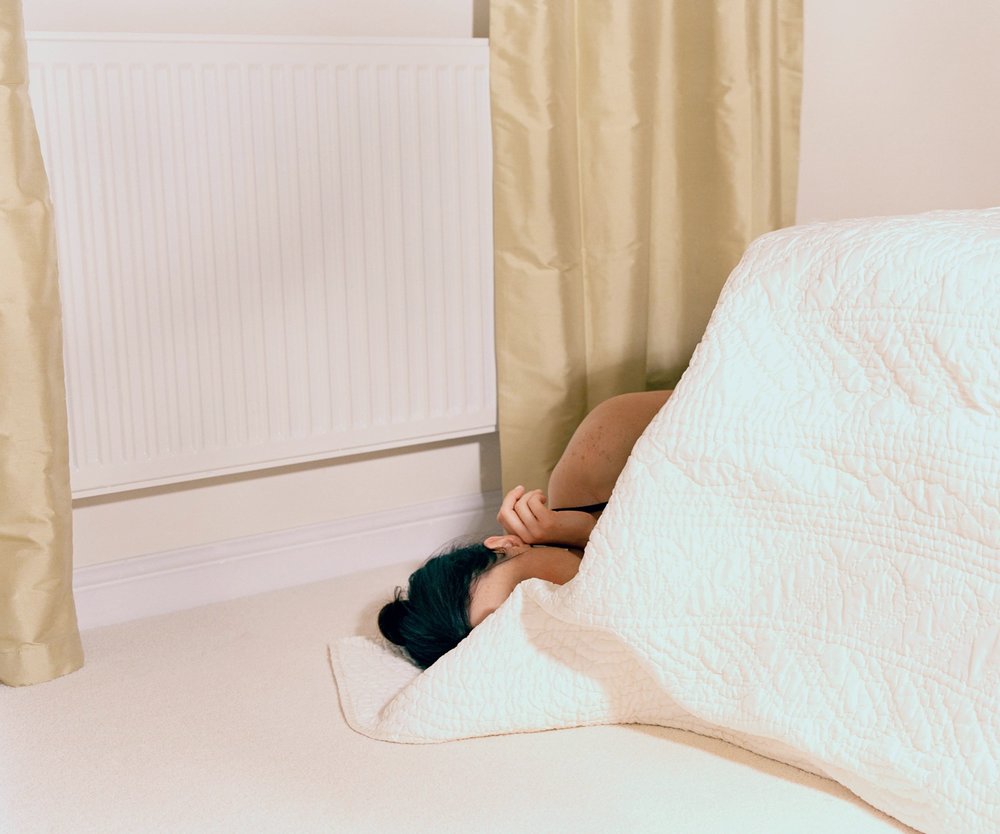
Natasha Caruana: The Other Woman, 2005
PHOTO-ASSIGNMENT 3: Home Sweet Home
Interior — RULE: Use tripod
Exterior
50-100 images
DEADLINE: Wed 8 July
INTERIOR: Photograph your home with no people in it. You could focus on the locations where you shot your portraits. Make sure to consider rooms with interest, eg. space, decor, furniture, objects on display etc.
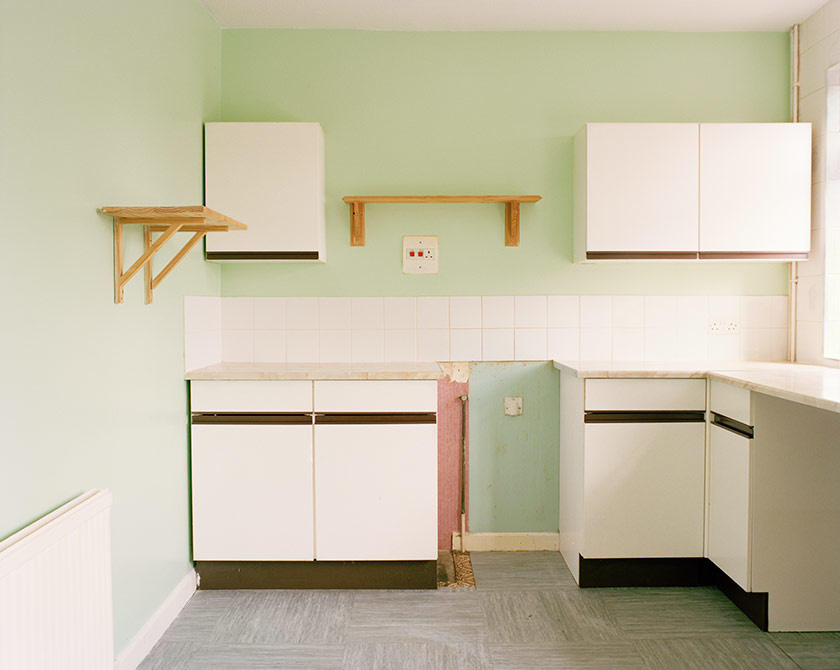
Laura Blight : House Clearances 2010
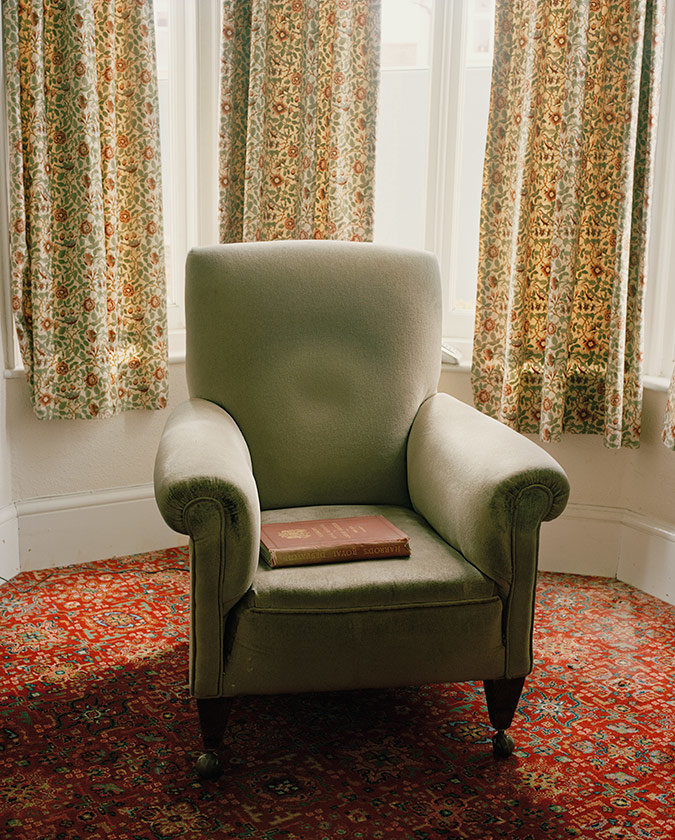
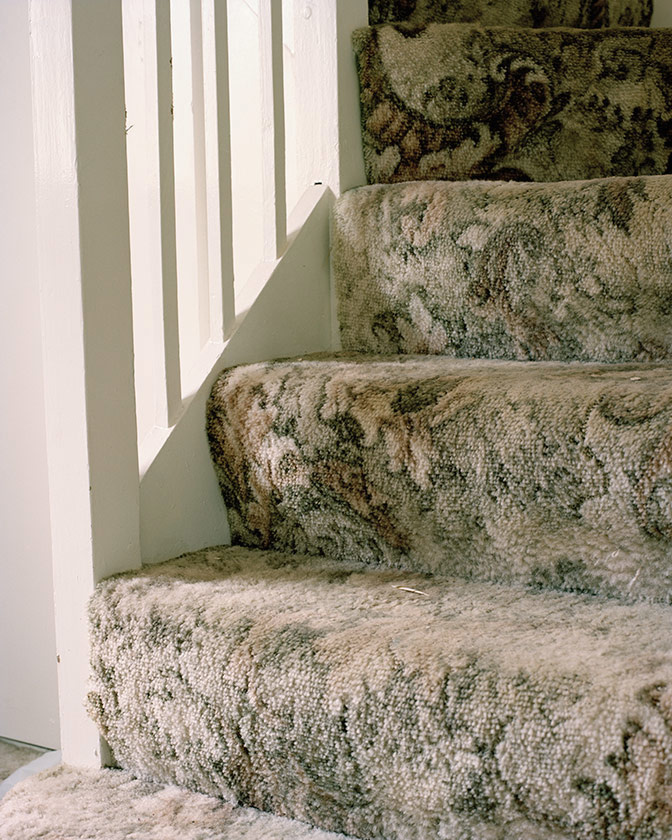




Sirkka-Liisa Konttinen: Byker, 1975-1980



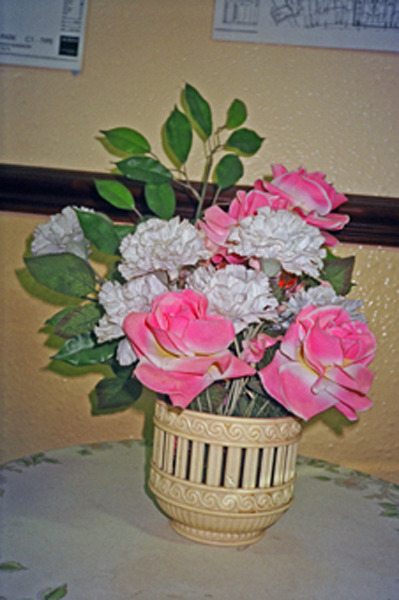

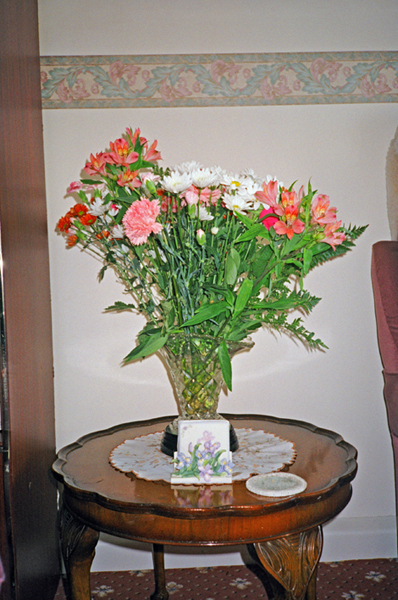
Anna Fox: Mum in a Million, 2007
EXTERIOR: Photograph your home from the outside, using different points of view from the garden, road. Consider different angles, details as well as deadpan approach. Include fences, hedges. Produce a typologies of every house on your street photographed from the roadside.


Stephen McCoy: Housing Estates Box Set, 1985




SUMMER TASK: Home Sweet Home
Self-portrait — RULE: Use tripod
Family archives
250 – 400 images
DEADLINE: Tue 2 Sept (first day of term)
The last photo-assignment is more of a SUMMER TASK that will enable you to explore the concept of HOME more broadly beyond the confines of the four walls of your house where you live. Jersey, the island where you perhaps are born or where you grew up can be considered a home too. Home can be interpreted as a community of friends that you identify with and share common interests collectively. If you are away from home you often think about your home with a sense of nostalgia. Home can be associated with memories, feelings, hopes, fears etc.
SELF-PORTRAIT: With social distancing rules easing you are now allowed to move more freely about and meet people outside of your immediate family. However some of you may have personal experiences of self-isolation and want to explore this in a series of self-portraits.
For this task you can draw on knowledge and understanding you learned from your IDENTITY project and find inspirations from artists listed here.
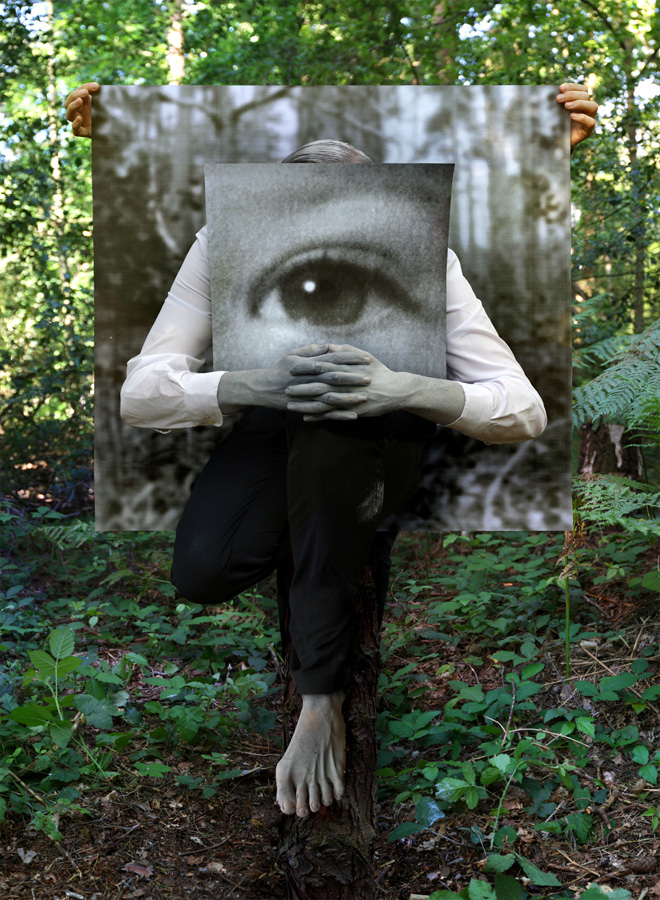
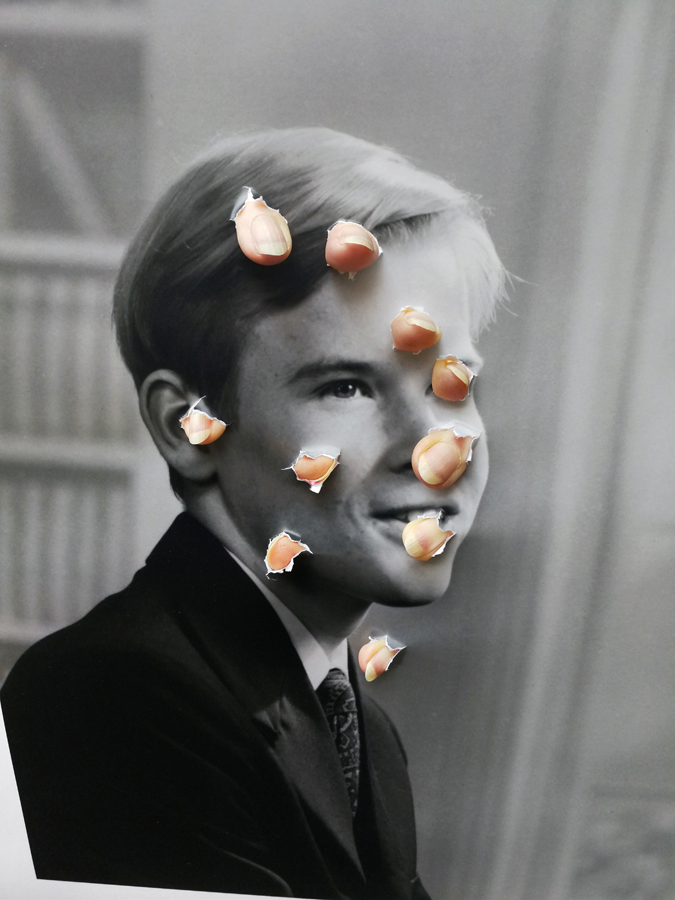

Jonny Briggs: In search of lost parts of my childhood I try to think outside the reality I was socialised into and create new ones with my parents and self. Through these I use photography to explore my relationship with deception, the constructed reality of the family, and question the boundaries between my parents and I, between child/adult, self/other, nature/culture, real/fake in attempt to revive my unconditioned self, beyond the family bubble. Although easily assumed to be photoshopped or faked, upon closer inspection the images are often realised to be more real than first expected. Involving staged installations, the cartoonesque and the performative, I look back to my younger self and attempt to re-capture childhood nature through my assuming adult eyes.
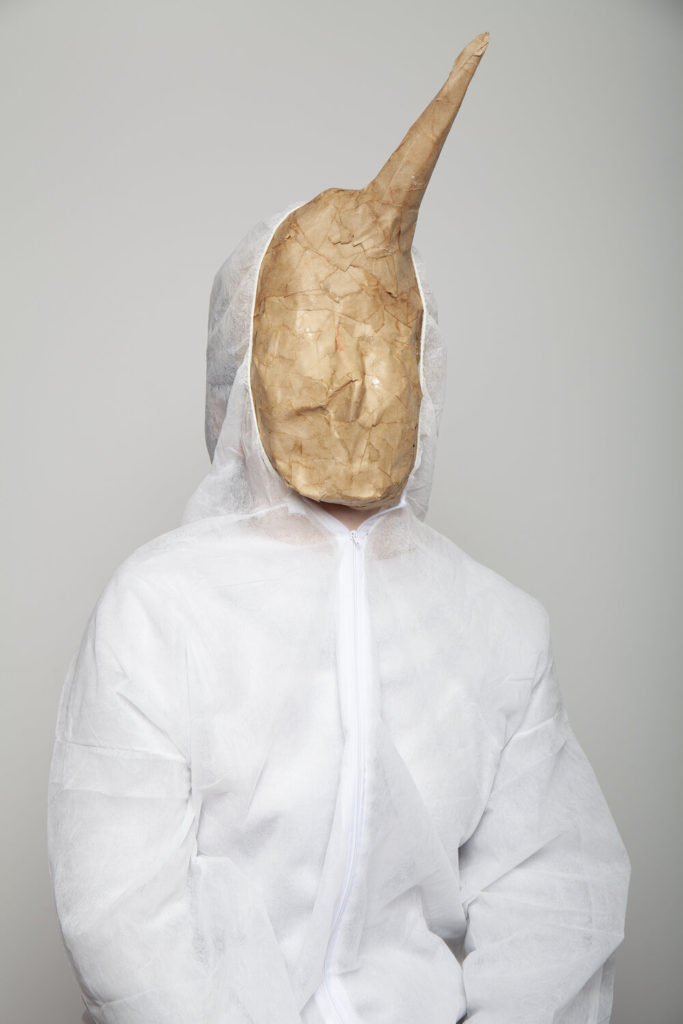
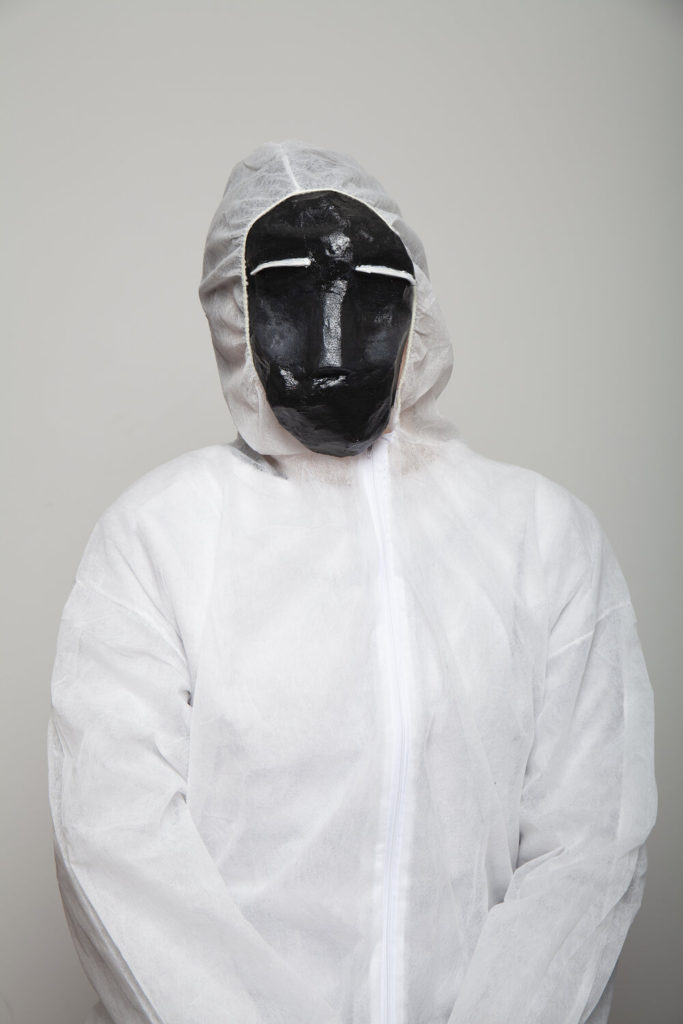
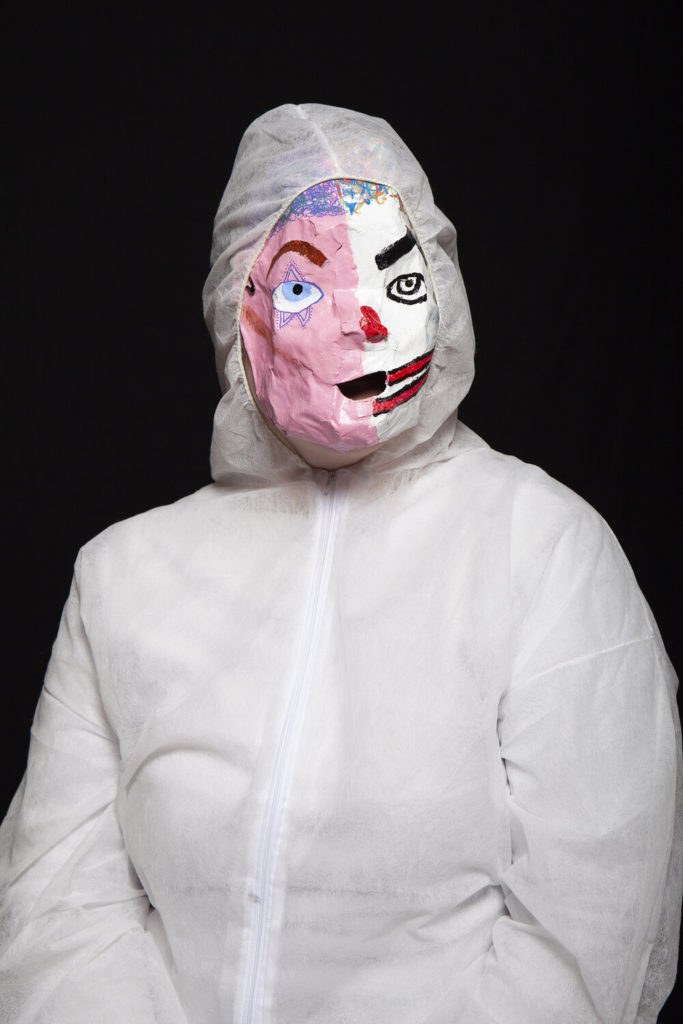
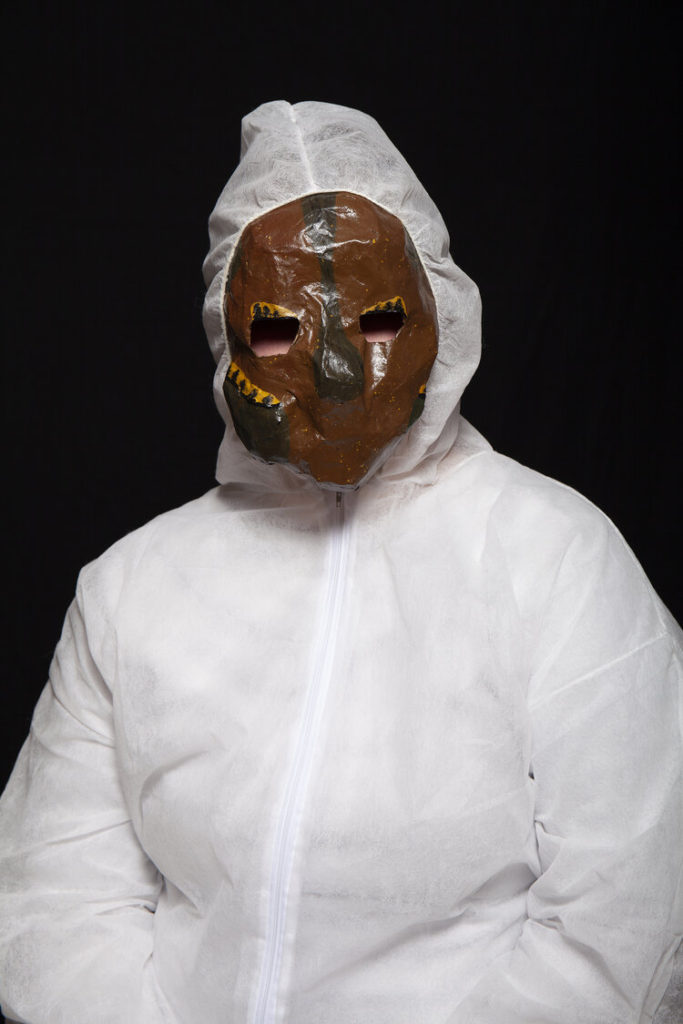
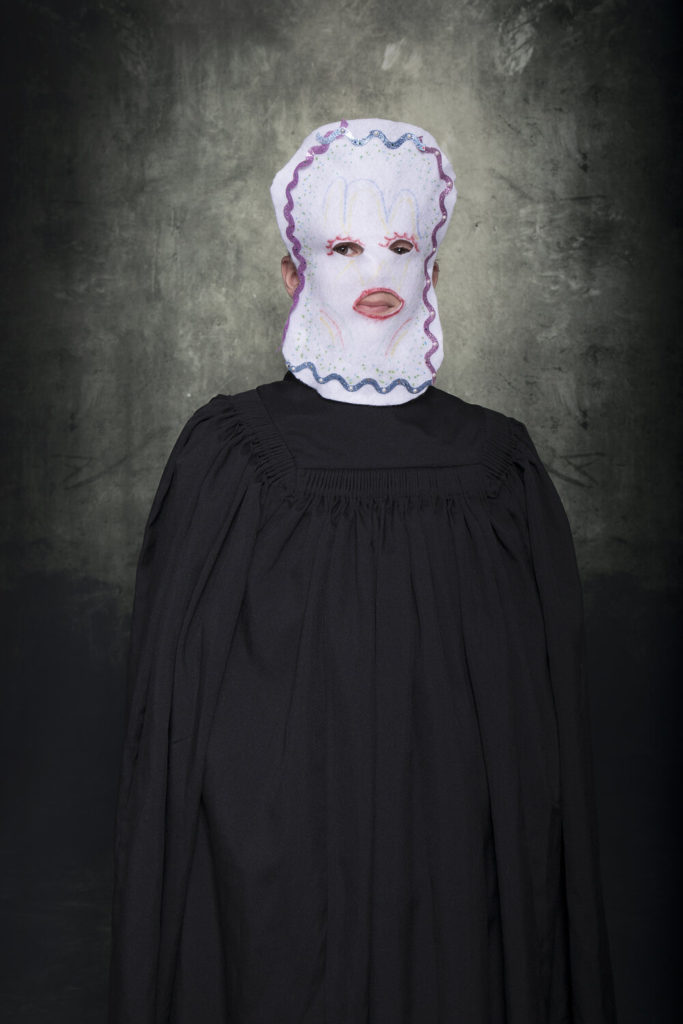
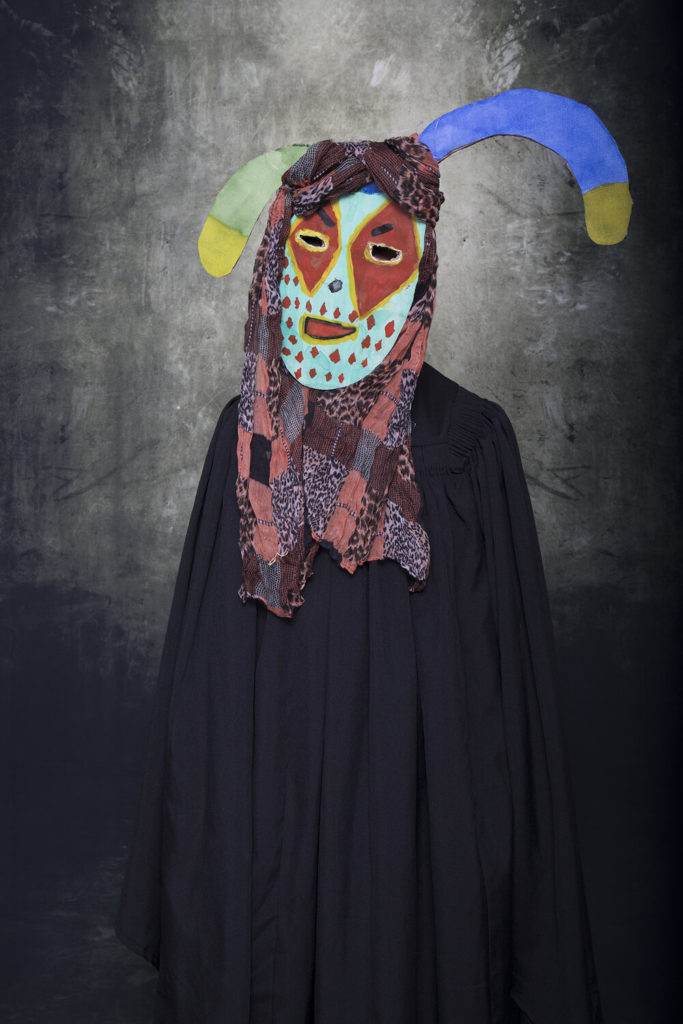
Aaron Yeandle: PPE 19
PPE or Personal Protective Equipment is specialist equipment health professionals wear to protect themselves and people from germs. This barrier reduces the chance of spreading infection through touch, being exposed to viruses in the air and stop person to person transmission. Images of hazmat suits and medical professionals in full-body scrubs and surgical masks are inundating the media and society. The sight of so many people wearing these outfits makes many of us feel anxious and concerned. However, we do recognise that masks and Personal Protective Equipment are effective in helping to reduce the spread of disease and viruses.
During the seventeenth century the bubonic plague epidemic swept through western Europe. Plague doctors who treated the infected wore Personal Protective Equipment to protect them from infections such as miasma, or “bad air”. Miasma at this period of time was understood to carry disease’s and viruses. This menacing suit typically consisted of a head-to-toe leather or wax-canvas garment, large crystal glasses; and a long snout or bird beak. These photographs are my contemporary interpretation of the historical and contemporary fusion of Personal Protective Equipment in these strange and uncertain times.

Claude Cahun, born Lucy Schwob was a French photographer, sculptor, and writer. She is best known for her self-portraits in which she assumes a variety of personas, including dandy, weight lifter, aviator, and doll.
The Jersey Heritage Trust collection represents the largest repository of the artistic work of Cahun who moved to the Jersey in 1937 with her stepsister and lover Marcel Moore. She was imprisoned and sentenced to death in 1944 for activities in the resistance during the Occupation. However, Cahun survived and she was almost forgotten until the late 1980s, and much of her and Moore’s work was destroyed by the Nazis, who requisitioned their home. Cahun died in 1954 of ill health (some contribute this to her time in German captivity) and Moore killed herself in 1972. They are both buried together in St Brelade’s churchyard.
Link to Jersey Heritage: https://www.jerseyheritage.org/collection-items/claude-cahun
A few more articles to read:
https://www.theguardian.com/books/2012/feb/14/claude-cahun-finding-great
http://www.bbc.com/culture/story/20160629-claude-cahun-the-trans-artist-years-ahead-of-her-time

In this image, Cahun has shaved her head and is dressed in men’s clothing. She once explained: “Under this mask, another mask; I will never finish removing all these faces.”1 (Claude Cahun, Disavowals, London 2007, p.183)

Cahun was friends with many Surrealist artists and writers; André Breton once called her “one of the most curious spirits of our time.”2 While many male Surrealists depicted women as objects of male desire, Cahun staged images of herself that challenge the idea of the politics of gender. Cahun was championing the idea of gender fluidity way before the hashtags of today. She was exploring her identity, not defining it. Her self-portraits often interrogates space, such as domestic interiors and Jersey landscapes using rock crevasses and granite gate posts.



Last year the National Portrait Gallery in London brings the work of Claude Cahun and Gillian Wearing together for the first time. Slipping between genders and personae in their photographic self-images, Wearing and Cahun become others while inventing themselves. “We were born in different times, we have different concerns, and we come from different backgrounds. She didn’t know me, yet I know her,” Wearing says, paying homage to Cahun and acknowledging her presence. The bigger question the exhibition might ask is less how we construct identities for ourselves than what is this thing called presence?
Gillian Wearing and Claude Cahun: Behind the Mask, Another Mask is at the National Portrait Gallery, London, 9 March-29 May


Behind a mask, Wearing is being Cahun. Previously she has re-enacted photographs of Andy Warhol in drag, the young Diane Arbus with a camera, Robert Mapplethorpe with a skull-topped cane, hard-bitten New York crime photographer Weegee wreathed in cigar-smoke. Among these doubles, you know Wearing is in the frame somewhere, under the silicon mask and the prosthetics, the wigs and makeup and the lighting. Going through her own family albums, she has become her own mother and her father. It is a surprise she has never got lost in this hall of time-slipping mirrors, among her own self-images and the faces she has adopted. Wearing has got others to play her game, too – substituting their own adult voices with those of a child, putting on disguises while confessing their secrets on video. Read articles in relation to exhibition here:http://aperture.org/blog/feminism-gillian-wearing-claude-cahun/https://www.theguardian.com/artanddesign/2017/jan/08/gillian-wearing-claude-cahun-mask-national-portrait-gallery
Claude Cahun has been described as a Cindy Sherman before her time. Wearing’s art undoubtedly owes something to Sherman – just as Sherman herself is indebted to artist Suzy Lake. Looking back at Cahun, Wearing is both tracing artistic influence, and paying homage to it, teasing out threads in a web of relationships crossing generations.

Masquerading as a myriad of characters, Cindy Sherman (American, born 1954) invents personas and tableaus that examine the construction of identity, the nature of representation, and the artifice of photography. To create her images, she assumes the multiple roles of photographer, model, makeup artist, hairdresser, and stylist. Whether portraying a career girl, a blond bombshell, a fashion victim, a clown, or a society lady of a certain age, for over thirty-five years this relentlessly adventurous artist has created an eloquent and provocative body of work that resonates deeply in our visual culture. For an overview of Sherman’s incredible oeuvre see Museum Of Modern Art’s dedicated site made at a major survey exhibition of her work in 2012.

This exhibition surveys Sherman’s career, from her early experiments as a student in Buffalo in the mid-1970s to a recent large-scale photographic mural, presented here for the first time in the United States. Included are some of the artist’s groundbreaking works—the complete “Untitled Film Stills” (1977–80) and centerfolds (1981), plus the celebrated history portraits (1988–90)—and examples from her most important series, from her fashion work of the early 1980s to the break-through sex pictures of 1992 to her monumental 2008 society portraits.


Sherman works in series, and each of her bodies of work is self-contained and internally coherent; yet there are themes that have recurred throughout her career. The exhibition showcases the artist’s individual series and also presents works grouped thematically around such common threads as cinema and performance; horror and the grotesque; myth, carnival, and fairy tales; and gender and class identity.
FAMILY ARCHIVES: Both public and private archives can be a rich source for finding starting points on your creative journey. This will strengthen your research and lead towards discoveries about the past that will inform the way you interpret the present and anticipate the future. See more Public/ Private Archives
For example, you can focus on the life on one parent, grand-parent, family relative, or your own childhood and upbringing. Ask other family members (parents, grand-parents, aunties, uncles) if you can look through their photo-albums too etc.
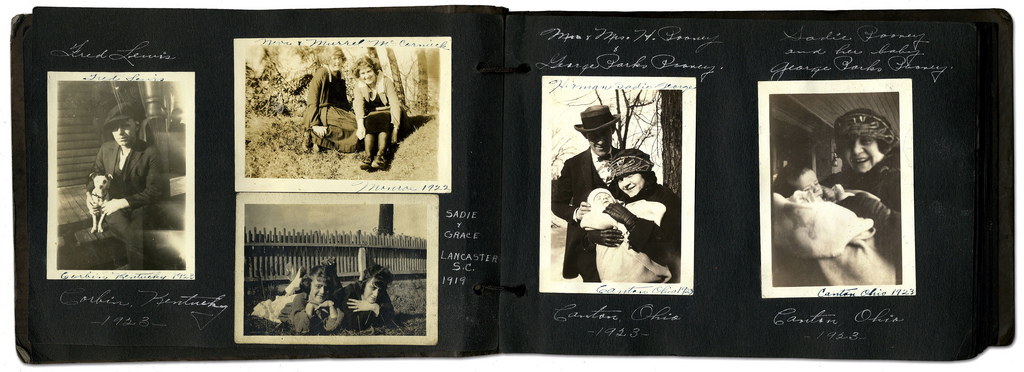

STEP-BY-STEP GUIDE:
- RESEARCH your own family/ private archives such as photo-albums, home movies, diaries, letters, birth-certificates, boxes, objects, mobile devices, online/ social media platforms and make a blog post with a selection of material that can be used for further development and experimentation using a variety of re-staging or montage techniques.
- DIGITISATION: Either scan or re-photograph archival material so that it is digitised and ready for use on the blog and further experimentation.
- PLANNING > RECORDING: Plan at least one photo-shoot and make a set of images that respond to your archival research. This can be re-staging old photos or make a similar set of images, eg. portraits of family members and how they have changed over the years, or snapshots of social and family gatherings.
- EXPERIMENTATION: Choose one of your images which relates to the theme of family (e.g. archive, family album, or new image you have made) and destroy the same image in 5 different ways using both analogue and digital method techniques. Eg. Reprint old and new photos and combine using scissors/ tearing and glue/ tape. In Photoshop use a variety of creative tools to cut and paste fragments of images to create composites.
Extension: Choose a second image and destroy it in 5 new or other ways. - EVALUATION: Evaluate each assignment and make a self assessment based on the criteria, EFFORT, SKILL, CREATIVITY and AESTHETIC using this mark sheet and post on the blog.




Thomas Sauvin and Kensuke Koike: ‘No More, No Less’
In 2015, French artist Thomas Sauvin acquired an album produced in the early 1980s by an unknown Shanghai University photography student. This volume was given a second life through the expert hands of Kensuke Koike, a Japanese artist based in Venice whose practice combines collage and found photography. The series, “No More, No Less”, born from the encounter between Koike and Sauvin, includes new silver prints made from the album’s original negatives. These prints were then submitted to Koike’s sharp imagination, who, with a simple blade and adhesive tape, deconstructs and reinvents the images. However, these purely manual interventions all respect one single formal rule: nothing is removed, nothing is added, “No More, No Less”. In such a context that blends freedom and constraint, Koike and Sauvin meticulously explore the possibilities of an image only made up of itself.

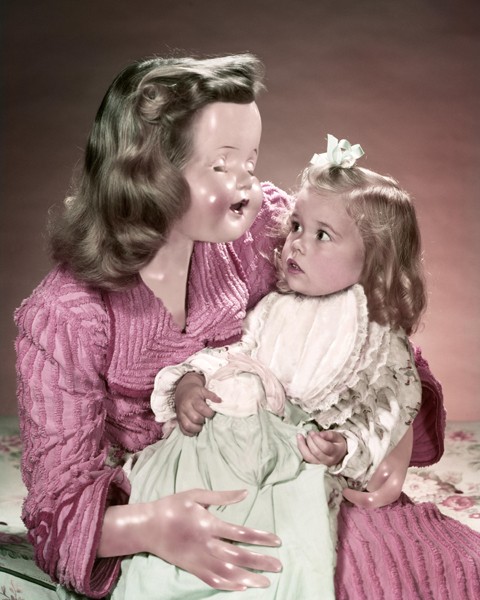

Veronica Gesicka Traces presents a selection of photomontages created by Weronika Gęsicka on the basis of American stock photographs from the 1950s and 1960s. Family scenes, holiday memories, everyday life – all of that suspended somewhere between truth and fiction. The images, modified by Gęsicka in various ways, are wrapped in a new context: our memories of the people and situations are transformed and blur gradually. Humorous as they may seem, Gęsicka’s works are a comment on such fundamental matters as identity, self-consciousness, relationships, imperfection.
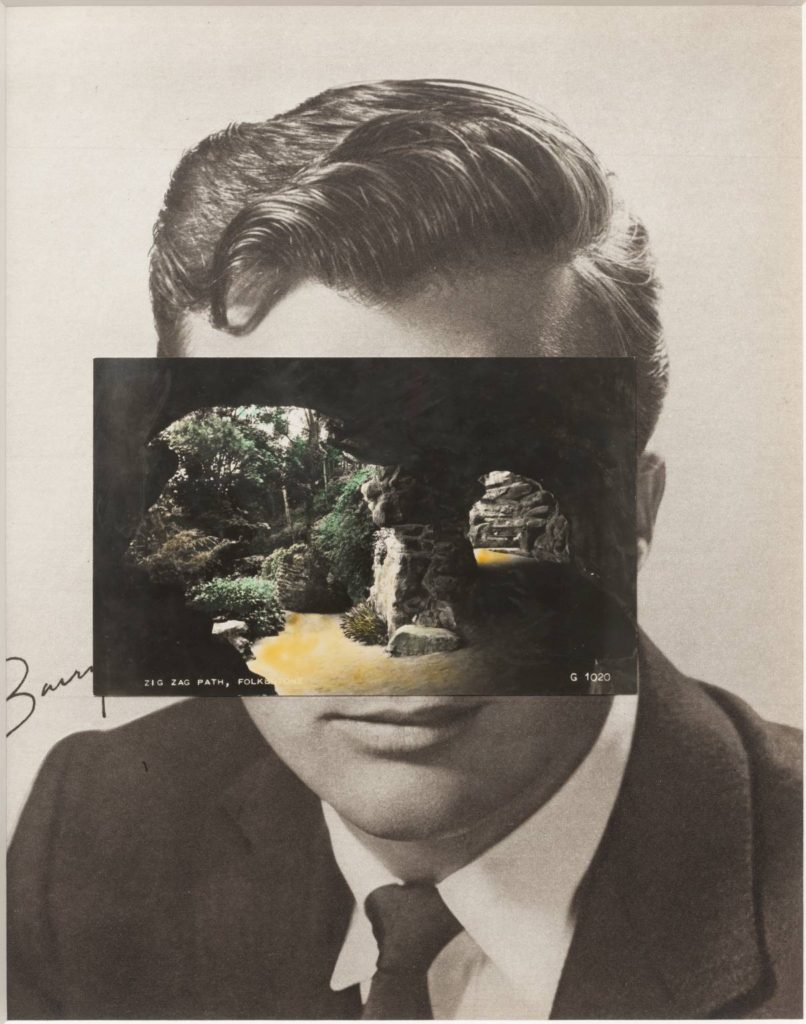
John Stezaker: Is a British artist who is fascinated by the lure of images. Taking classic movie stills, vintage postcards and book illustrations, Stezaker makes collages to give old images a new meaning. By adjusting, inverting and slicing separate pictures together to create unique new works of art, Stezaker explores the subversive force of found images. Stezaker’s famous Mask series fuses the profiles of glamorous sitters with caves, hamlets, or waterfalls, making for images of eerie beauty.

His ‘Dark Star’ series turns publicity portraits into cut-out silhouettes, creating an ambiguous presence in the place of the absent celebrity. Stezaker’s way of giving old images a new context reaches its height in the found images of his Third Person Archive: the artist has removed delicate, haunting figures from the margins of obsolete travel illustrations. Presented as images on their own, they now take the centre stage of our attention
There are different ways artists and photographers have explored their own, or other families in their work as visual storytellers. Some explore family using a documentary approach to storytelling, others construct or stage images that may reflect on their childhood, memories, or significant events drawing inspiration from family archives/ photo albums and often incorporating vernacular images into the narrative and presenting the work as a photobook.
Rita Puig-Serra Costa (Where Mimosa Bloom) vs Laia Abril (The Epilogue)> artists exploring personal issues > vernacular vs archival > inside vs outside

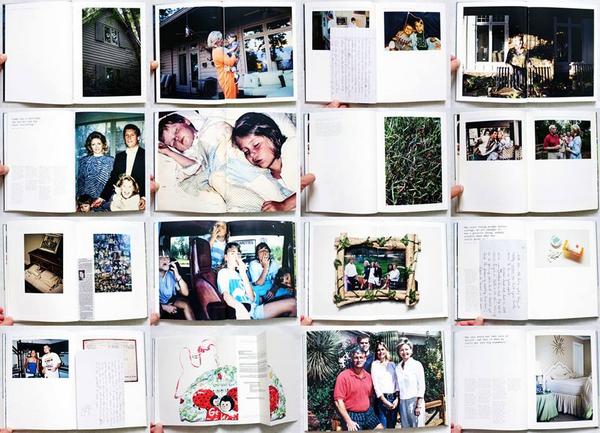
Carole Benitah (Photo Souvenirs) vs Diane Markosian (Inventing My Father) > family > identity > memory > absence > trauma
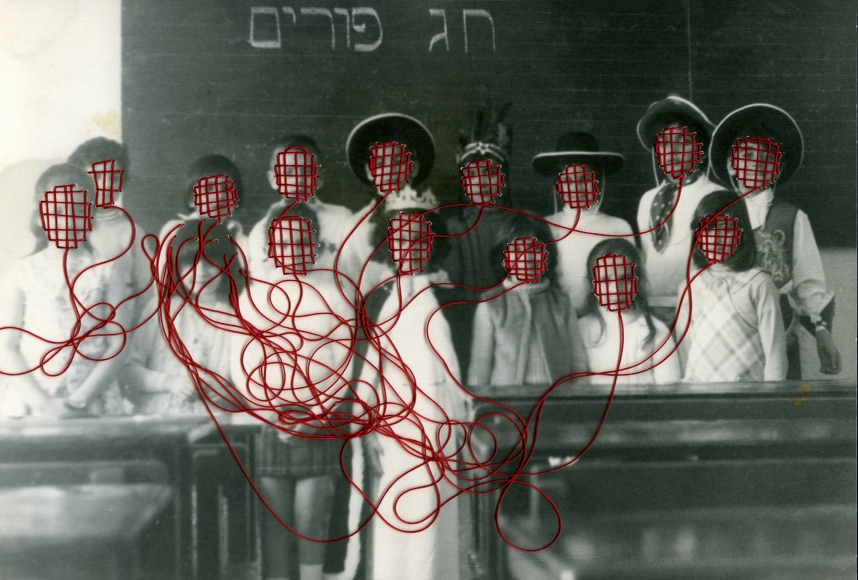

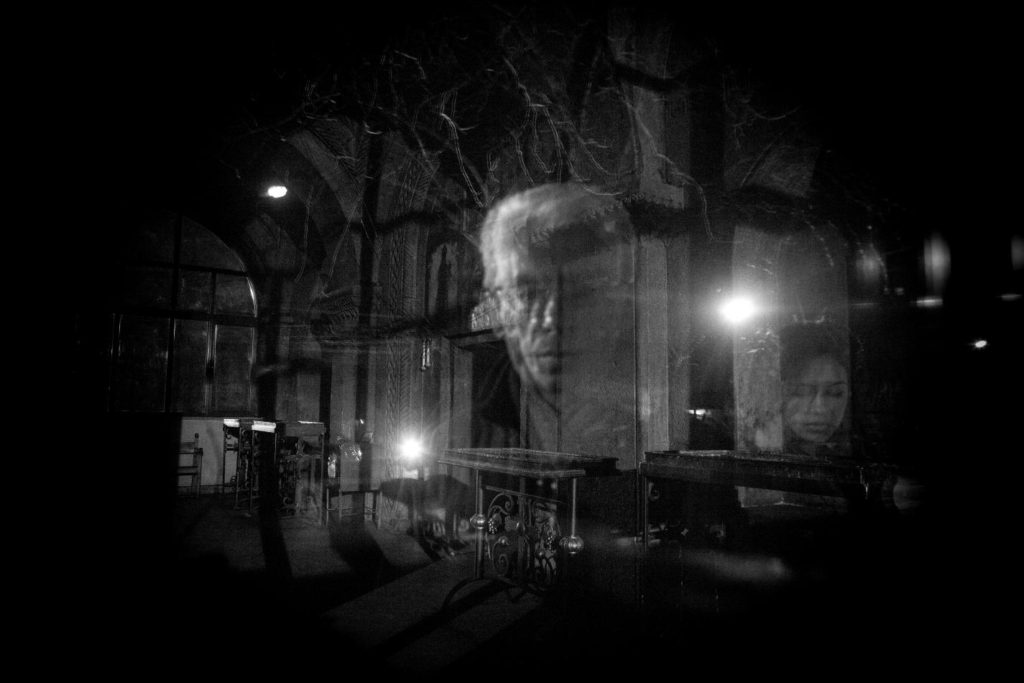
Ugne Henriko (Mother and Daughter) vs Irina Werning or Chino Otsuka > re-staging images > re-enacting memories

Read article in The Guardian
